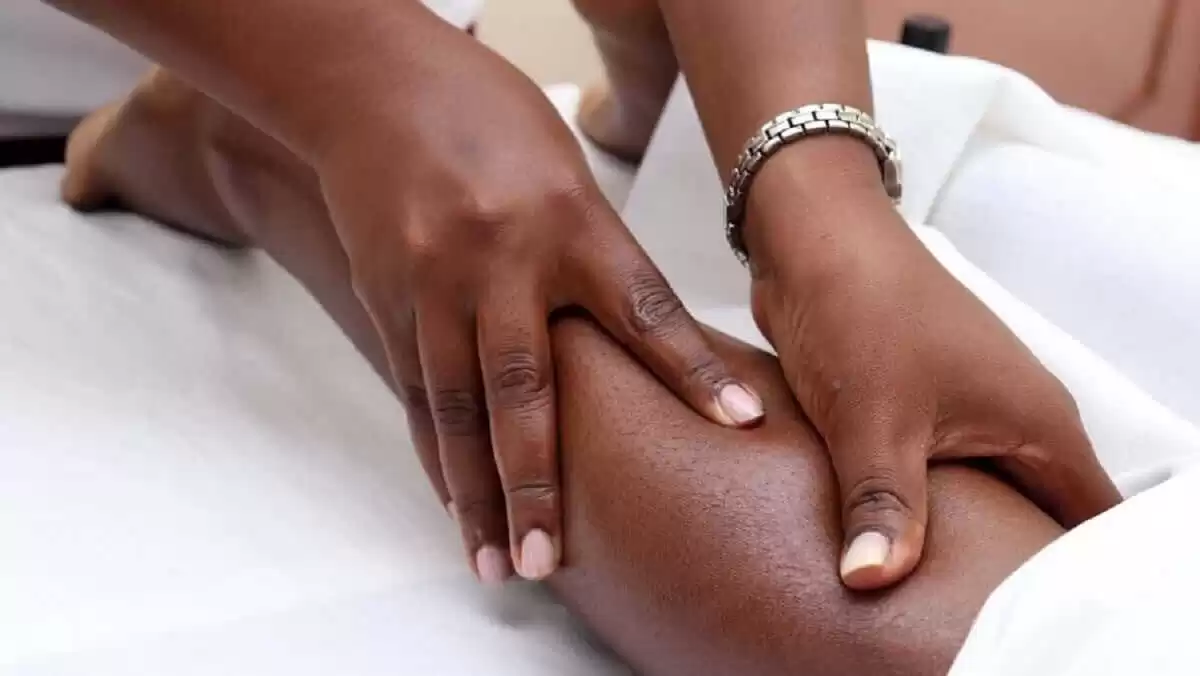
A deep-tissue massage targets the inner layers of your muscles. In this post, you will learn what it involves, its purpose, what to expect in your massage session, and do afterwards.
On this page
What is involved in a deep-tissue massage?
Using slow and deep strokes, sustained and increased pressure is applied to the body using the palms, fingers, elbows, and forearms to knead and manipulate the inner layers of the muscles and connective tissues.

The purpose of a deep-tissue massage
The massage technique is mainly used to treat musculoskeletal issues because;
- It reduces tension in muscles and tissue.
- It helps to break up scar tissue that forms following an injury.
- It promotes faster healing and recovery by increasing blood flow and reducing inflammation. Because of this, it a recommended after strains and sports.
- It helps break down cellulitis and enhance skin tone.
What to expect in your massage treatment
- Consultation: Before offering you a deep-tissue massage, I will want to know your age, your health condition, and your problem areas. This is because deep-tissue is not suitable for pregnant women, people with osteoporosis, or people at risk of forming blood clots.
- Treatment:
- Once ready, I will ask you to lie on your back or stomach, under a sheet. The massage can involve your entire body or just focus on one area. Your level of undressing is based on your comfort, but the area being worked on will need to be exposed.
- I will warm up your muscles using a lighter touch. Then, I’ll start working on your problem areas. I’ll use deep kneading and stroking with varying amounts of intense pressure.



Check out this video on my YouTube channel about what to expect during a deep tissue massage therapy session
Care after a deep-tissue massage treatment
There are certain things you can do after a massage to help you reap the most benefits. After your appointment, remember to:
- Drink a lot of water to rehydrate. Drinking helps to remove any metabolic wastes which accumulate while your muscles were being worked on.
- Avoid working out immediately after a deep tissue massage. Getting a deep tissue massage is similar to a hard workout and your muscles need time to recover. You should wait for 12 – 24 hours before hard exercise to allow your body to heal and recover.
- Treat any soreness. If your muscles feel tight and painful, try some light stretching. Some discomfort and soreness after the massage is normal. If need be, I recommend applying deep freeze (from the deep heat line of products) or ice to ease the soreness. The stiffness should go away after a day or two. However, you should not experience crippling and shooting pain, if that happens, something is wrong.
- Avoid having a heavy meal right after. Opt for something light and healthy like a bowl of fruit salad, or anti-inflammatory food like broccoli which helps with sore muscles. You want to feel reenergized and not bloated.
- Avoid drinking alcohol, coffee, or eating anything with caffeine after your appointment. Alcohol is dehydrating, and your body needs more water post-massage. You don’t want substances like alcohol to further tax your body as it filters out the toxins. Until your body has had some time to rest and recover, it is best to take only water.

Are you considering getting a deep-tissue massage, please schedule your massage appointment now.
We come to your home/office/hotel in Nairobi and the neighboring towns.
Last Updated on November 15, 2024
